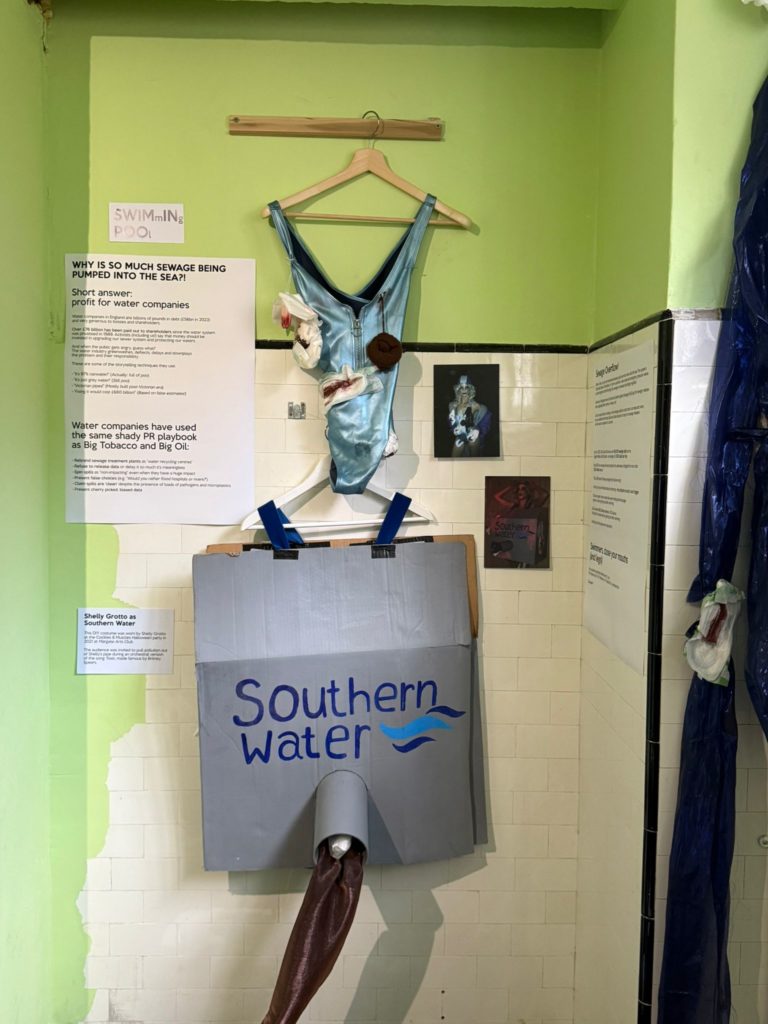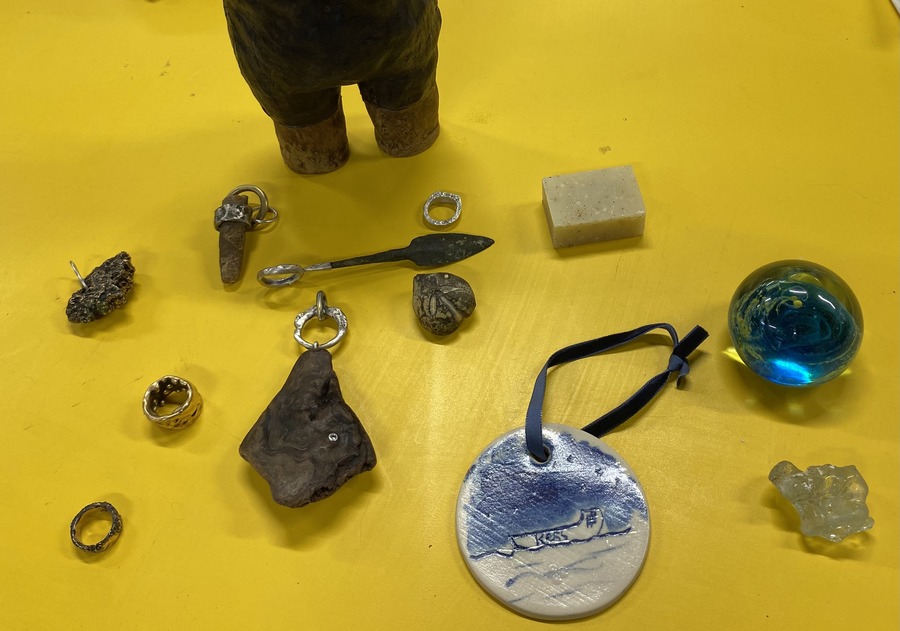To celebrate Margate Pride, Flow.Walk.Drag has co-curated a pop-up exhibition at Margate’s Crab Museum – ECO-DRAG.
Come learn about local drag performances that take on environmental issues, namely Southern Water’s persistent sewage spills. Learn about the impact on public health and the characteristics of one notorious bacteria that comes to town with heavy rain and sewage overflows: E. coli.

Margate’s ornate, subterranean queen Shelly Grotto has previously embodied Southern Water and the Ocean to raise awareness of corporate sewage pollution. Shelly explores why drag eco-activism is so powerful and offers her top-tips for drag eco-activism.
The exhibition is open 11-5 until Sunday 10th August.
And at 4pm on the final day, come and join a speed-dating event with E. coli. You can win a spot to go on a date with this notorious, mysterious, misunderstood bacteria. Sign up to win a slot here!


